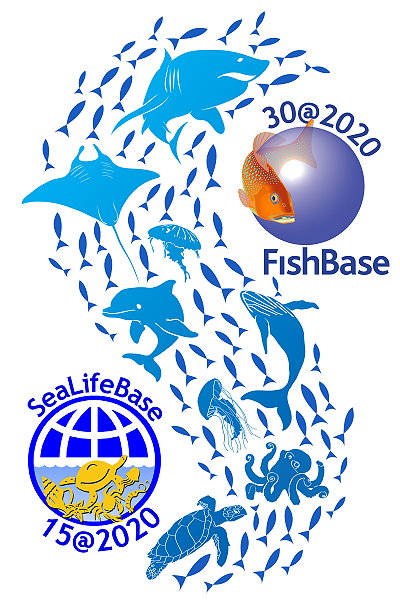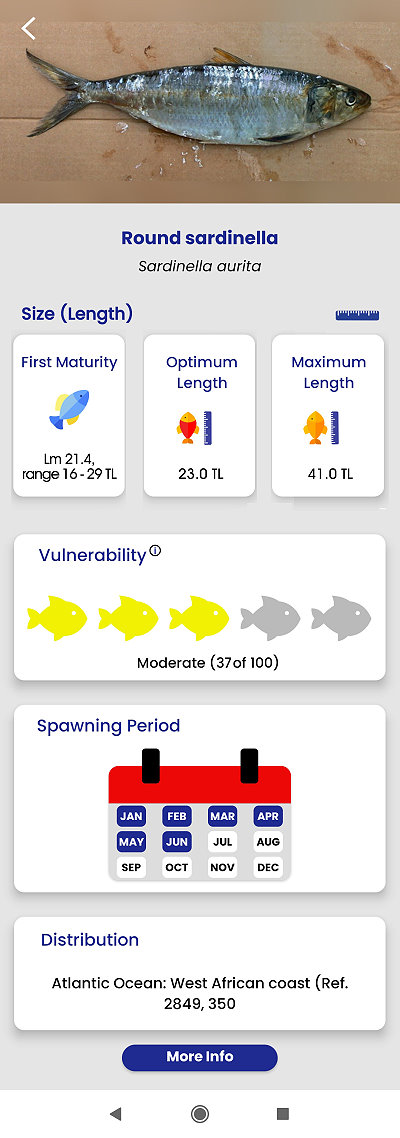 Covid got the better of the anniversaries - 30 years of FishBase and 15 years of SeaLifeBase - with celebrations originally scheduled for 2020. But this year, the FishBase and SeaLifeBase Symposium could take finally place in Paris from 6 to 7 September and was all the more diverse and informative. Thanks to the team of Patrice Pruvost of the Museum National de l'Histoire Naturelle and reinforced by Fabrice Teletchea of Loraine University and Valérie Gaudant of Cybium it was beautifully organised in the Auditorium of the Grande Galerie de l'Evolution of the Museum.
Covid got the better of the anniversaries - 30 years of FishBase and 15 years of SeaLifeBase - with celebrations originally scheduled for 2020. But this year, the FishBase and SeaLifeBase Symposium could take finally place in Paris from 6 to 7 September and was all the more diverse and informative. Thanks to the team of Patrice Pruvost of the Museum National de l'Histoire Naturelle and reinforced by Fabrice Teletchea of Loraine University and Valérie Gaudant of Cybium it was beautifully organised in the Auditorium of the Grande Galerie de l'Evolution of the Museum.
The 'fathers' of FishBase opened the scientific presentations. Daniel Pauly challenged physiologists to explain the mechanism behind the maturation of fish. He put forward his hypothesis that it was the diminishing ratio of oxygen supply signalling the fish that it was time to reproduce.
How that? Gill breathing organisms like fish must spend a lot of energy to extract dissolved oxygen out of the water and put back CO2.
The gills are a surface that grows to the second power, while the body of the fish, a volume, grows to almost the third power. When the gills can not keep apace with body increase this is believed to be the trigger.
This is not what students read in physiology books, so the talk was an invitation to check the veracity of the different hypotheses. So there is work to be done.

Rainer Froese then gave a talk on how the priors contained in FishBase could be used to support modelling and assessments of data poor stocks. These are the majority of resources, not only in developing countries. Priors are indices that encapsulate accumulated expert knowledge. Judiciously used in Bayesian statistics, they allow huge numbers of iterations in a mathematical model to estimate the best fit to scant data points based on underlying growth and production theory.
 FishBase typically is used by research organisations for their analyses as illustrated for example by Jessica Meeuwig at the University of Western Australia who uses FishBase for identification of species in underwater rvideo ecordings (BRUVS) for non-destructive population studies. Kélic Mahé from IFREMER in France cited several cases where FishBase has been used for biodiversity studies and is considering 'how to give back'.
FishBase typically is used by research organisations for their analyses as illustrated for example by Jessica Meeuwig at the University of Western Australia who uses FishBase for identification of species in underwater rvideo ecordings (BRUVS) for non-destructive population studies. Kélic Mahé from IFREMER in France cited several cases where FishBase has been used for biodiversity studies and is considering 'how to give back'.
Celia Schunter in Hongkong spoke passionately about new opportunities to analyse genetic diversity which could complement the rich datasets already avalable in FishBase. Rahel Salathé of FairFish showed yet other ways to use FishBase in the study of fish welfare.
Several presentations showed how public aquaria use FishBase and SeaLifeBase for generating the labels for the tanks and how the strike the balance between the huge amounts of specialist information in the databases with the simple orientation on what they see that most visitors are looking for.
Another type of use reaching out to a wider public was presented by the Fishipedia team who focuses its energy and skill on the Mediterranean to entice more responsible behaviour towards the ocean and its inhabitants.
 Cornelia E. Nauen of Mundus maris briefly presented the Small-Scale Fisheries Academy with its latest innovation effort to make a simple set of indicators available to fishers, fish mongers, women fish processors, but also potentially to schools and ordinary consumers.
Cornelia E. Nauen of Mundus maris briefly presented the Small-Scale Fisheries Academy with its latest innovation effort to make a simple set of indicators available to fishers, fish mongers, women fish processors, but also potentially to schools and ordinary consumers.
The app is deliberately reduced on few pieces of information not to overwhelm the users with detail. By identifying the country and typing in a common (vernacular) name in any language, users get shown a picture of the fish to check whether it corresponds to the fish in front of them and provides length measurements which are easy to check on site.
Common names are not unique like scientific names, so the same common name may be in use for more than one species. Or more than one common name may be used for highly commercial species. This is why pictures are important to help navigate to the right information.
The app provides length at first maturity, that is the length at which half the fish in the population have reached reproduction stage.
It also provides optimum and maximum size. Optimum size is of particular interest to fishers as highest catches can be sustained by rigging the gear for that size.
The app also offers a visual indication about the vulnerability of the species to overfishing directly derived from FishBase and shows the major months at which the species reproduces and should therefore be mostly left in peace.
The app has been developed by Mundus maris in collaboration with FairFish, the Sea Around Us and Quantitative Aquatics, home of FishBase. It is available under the name of FishBase Guide in the Google Play Store for free.
It is currently undergoing some more testing to ensure it's robust and functioning on a range of mobile phones that have wide distribution around the globe with particular attention to developing countries, where most small-scale fishers live.
Users can provide feedback if they notice anything that does not function according to expectation or notice any phenomena that could help improve the content in the database and improve the service.
Those wanting to know more than the indicators provided in the first layer of the app can also connect to the full FishBase information system.
The slides of the presentation are available here.
The first day of the symposium was crowned by a visit and reception of the recently renovated and reopened Tropical Aquarium at the Porte Dorée.
One of the rooms shows amazing video footage of humpback whales which dive and move to the rhythm of visitor movements. Quite an emotion!
The complete programme and book of abstracts can be seen here.
It's been a great get together not only of the members of the FishBase Consortium, but many others working on different fronts.
Together they strive to make the best available science accessible to an incredibly wide range of applications starting from solid taxonomy and all the other layers of knowledge then connected through a valid name and well described species.









